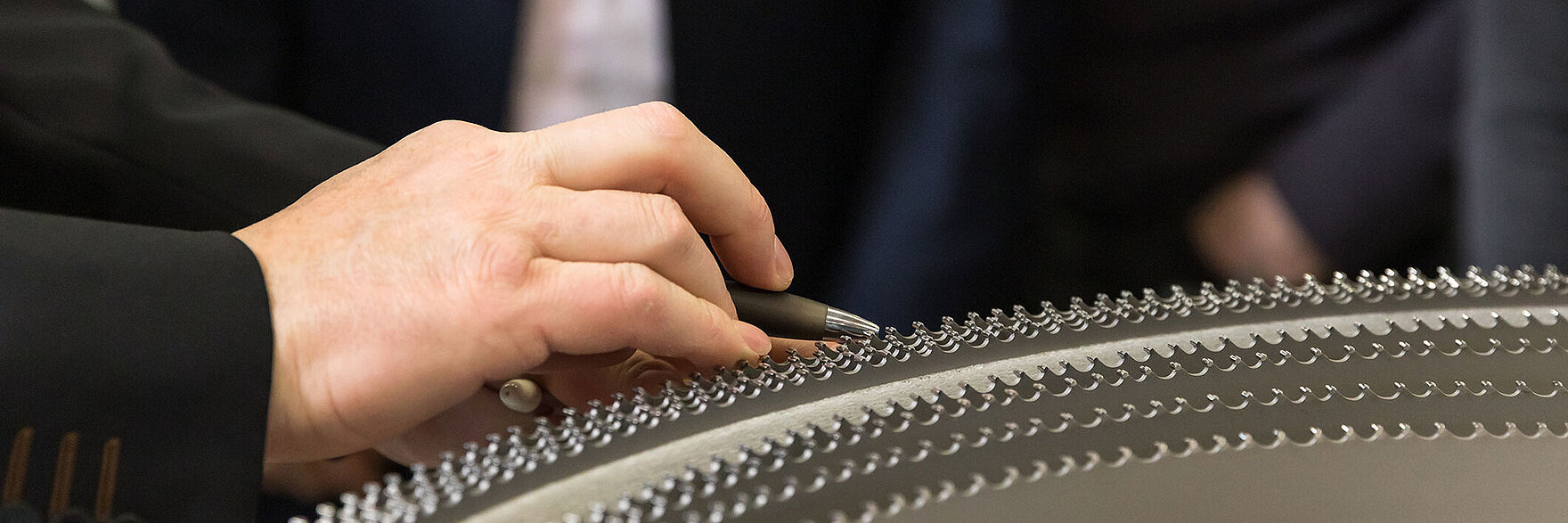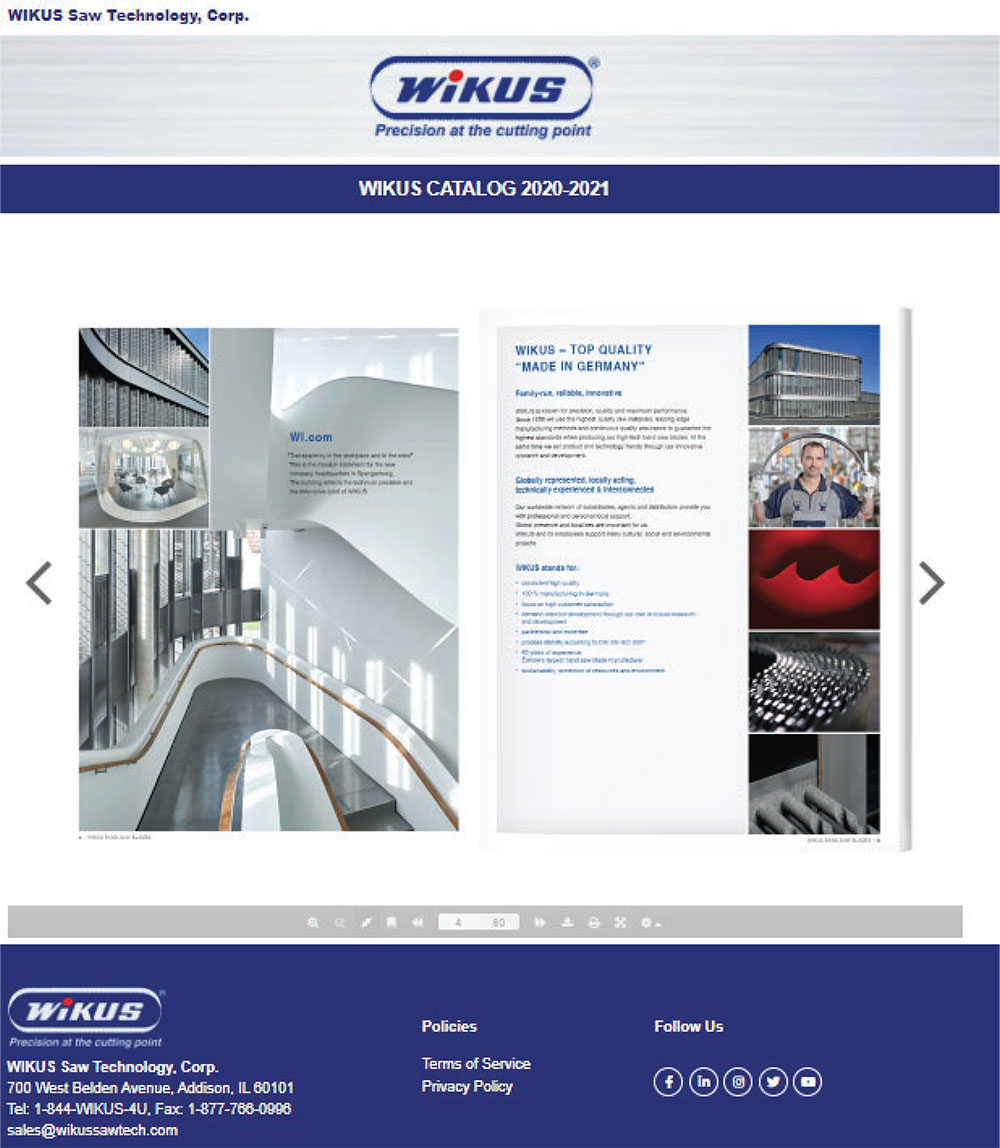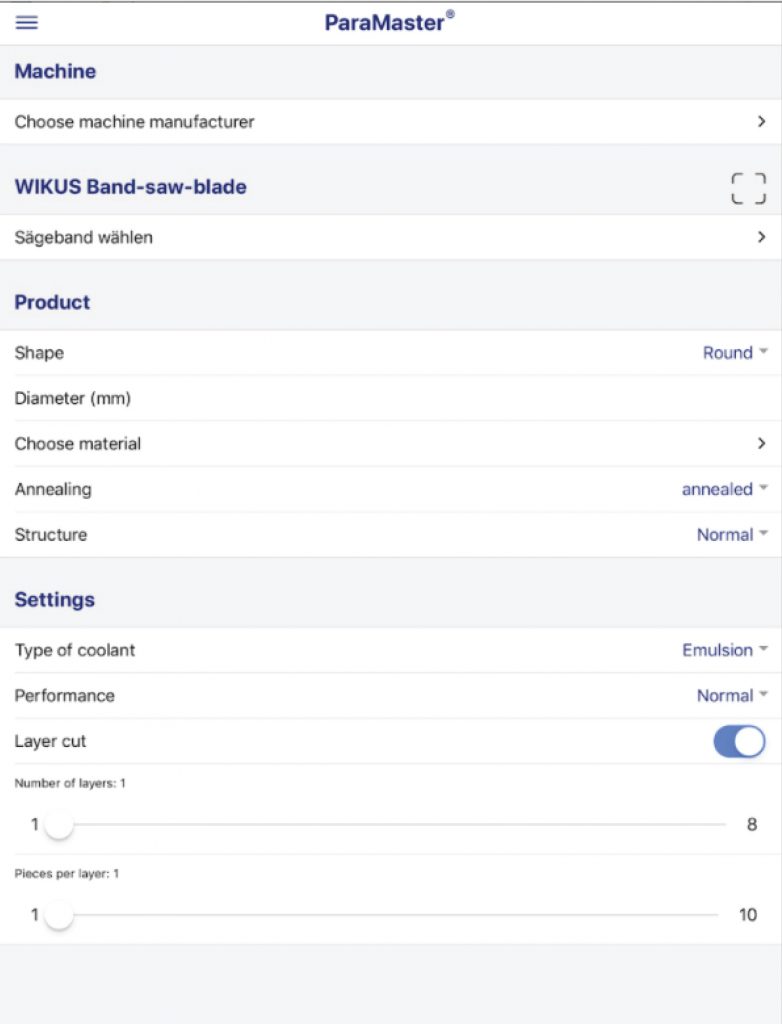Getting high-quality results in precision machining is key. Machinists need the best tools for tight tolerances and clean cuts. Wikus Saw Tech has high-performance bandsaw blades for many materials, like tool steels and titanium.
You need blades that meet your high standards. Precision machining is vital in many fields. The right bandsaw blades make your work both efficient and accurate.
Key Takeaways
- Understand the importance of precision machining in achieving high-quality results.
- Learn how the right bandsaw blades can enhance your machining operations.
- Discover the range of materials that Wikus Saw Tech’s precision blades can handle.
- Find out how precision blades contribute to efficient and accurate machining.
- Explore the expertise of Wikus Saw Tech in delivering high-performance bandsaw blades.
The Critical Role of Precision in Modern Machining
In today’s world, precision is key. It affects how good a product is and how much it costs. Knowing how important precision is helps a lot.
How Precision Affects Product Quality
How well a product is made depends on precision. High-precision cutting tools like bandsaw blades make clean cuts. This means less work later and a better product.
The Economic Impact of Precision Cutting
Being precise saves money. It cuts down on waste and extra steps needed. A study by the American Machinist shows savings of up to 20%.
“Precision is key to reducing costs and improving product quality. By investing in high-quality cutting tools, manufacturers can reap significant benefits in terms of efficiency and cost savings.”
John Doe, Manufacturing Expert
Challenges in Achieving Consistent Precision
Getting precision right is hard. Things like tool wear and material changes can mess things up. To fix this, using top-notch tools and keeping them in good shape is important.
| Challenge | Impact on Precision | Solution |
| Tool Wear | Reduced accuracy over time | Regular tool maintenance |
| Material Variability | Inconsistent cutting results | Material selection and testing |
| Machine Calibration | Inaccurate cuts if not calibrated | Regular machine calibration |
Understanding Bandsaw Blades: The Backbone of Precision Cutting
Bandsaw blades are key for precise cuts in many tasks. Their design, material, and how they work affect the cut’s quality and how fast they cut.
Anatomy of a Quality Bandsaw Blade
A top-notch bandsaw blade is made with care for exact cuts. The tooth configuration, blade width, and material composition are very important. The teeth help remove material well, and the blade’s body gives it strength and flexibility.
| Component | Function | Importance |
| Teeth | Material removal | High |
| Blade Body | Provides strength and flexibility | High |
| Backing Material | Supports the blade | Medium |
How Bandsaw Blades Work
Bandsaw blades spin around two or more wheels. The teeth cut the material. Adjusting the cutting speed and feed rate is key for precise cuts.
The Evolution of Bandsaw Technology
Bandsaw blade tech has grown a lot. New materials like bi-metal and carbide-tipped alloys make blades last longer and cut better.
Knowing about bandsaw blades helps you improve your cutting work.
Types of Bandsaw Blades for Different Applications
Choosing the right bandsaw blade is key for precise cuts in many materials. The blade type greatly affects your cutting’s efficiency and quality.
Bi-Metal Bandsaw Blades
Bi-metal blades mix high-speed steel teeth with a flexible alloy steel back. This combo offers durability and flexibility for various tasks.
They’re great for cutting metal pipes, tubes, and solid bars. Their versatility and performance make them a favorite in many fields.
Carbide-Tipped Bandsaw Blades
Carbide-tipped blades have teeth with carbide, a very hard material. They’re perfect for cutting hard or abrasive materials.
They’re used where high wear resistance is needed, like cutting stainless steel or hard alloys.
Carbon Steel Bandsaw Blades
Carbon steel blades are made from high-carbon steel. They’re tough and can be sharpened. They’re good for cutting softer materials.
These blades are often used for cutting wood, plastic, and other non-metallic materials. They need a sharp, durable tooth.
Diamond-Edge Bandsaw Blades
Diamond-edge blades are for cutting very hard or abrasive materials, like stone, concrete, and composites. The diamond edge is very durable and cuts well.
They’re used in special cases where the material is very hard or abrasive.
When to Use Each Type
| Blade Type | Best for Cutting |
| Bi-Metal | Metal pipes, tubes, and solid bars |
| Carbide-Tipped | Hard or abrasive materials like stainless steel |
| Carbon Steel | Wood, plastic, and other non-metallic materials |
| Diamond-Edge | Stone, concrete, and composites |
“The right bandsaw blade can make all the difference in your cutting operations, improving both efficiency and quality.”
Wikus Saw Tech
Knowing about different bandsaw blades and their uses helps you choose the best for your needs. This improves your cutting processes.
Premium Bandsaw Blades: What Sets Quality Apart
For industries that need precise cuts, knowing what makes top bandsaw blades is key. The quality of these blades is crucial for efficient and accurate machining.
Manufacturing Processes and Quality Control
The making of premium bandsaw blades follows strict quality checks. Wikus Saw Tech uses the latest tech to make sure each blade is perfect. They focus on:
- Precision forging to make blades strong
- Advanced tooth design for better cutting
- Checking quality at every step
Material Science Behind Superior Blades
The science behind top bandsaw blades is important. High-quality materials like high-speed steel and carbide are used. These materials make blades last longer and cut better.
Wikus Saw Tech’s Commitment to Excellence
Wikus Saw Tech aims to be the best in making bandsaw blades. They show their dedication through:
“We always try to get better at making blades to meet our customers’ needs.”
Proprietary Manufacturing Techniques
Wikus Saw Tech has special ways to make their blades stand out. They use special heat treatments and precise grinding. This makes their blades cut better and last longer.
Choosing premium bandsaw blades from Wikus Saw Tech means you get the best for your work.
Key Factors to Consider When Selecting Bandsaw Blades
Choosing the right bandsaw blade is important. It affects how well it cuts. Think about what you need for your cutting job.
Material Compatibility
The material you’re cutting is key. Different materials need different blades. For example, metal and wood need different types.
Tooth Configuration and Pitch
The teeth on the blade matter a lot. They help the blade cut well and last longer. The right teeth for your material make a big difference.
Blade Width and Thickness
Blade width and thickness matter too. A wider blade is more stable. But a thicker blade might need more power.
Cutting Speed Requirements
How fast you need to cut is important. Blades work best at certain speeds. Pick a blade that fits your speed needs.
Wikus Saw Tech’s Selection Guide
Wikus Saw Tech has a guide to help you pick the right blade. Think about material, teeth, and speed. This way, you get a blade that works well for you.
Industry-Specific Applications of Precision Bandsaw Blades
Precision bandsaw blades are used in many fields. They help in aerospace, automotive, and more. These blades are made to fit each industry’s needs, ensuring top quality.
Metalworking and Fabrication
In metalworking, these blades cut through steel, aluminum, and titanium. They make clean cuts, saving material and boosting work speed. Wikus Saw Tech’s bi-metal blades are a favorite for their toughness and accuracy.
Woodworking and Furniture Manufacturing
Woodworkers use these blades to make detailed cuts in wood. The blades are flexible and precise, making complex designs easy. They also give a smooth finish, cutting down on sanding.
Aerospace and Defense
The aerospace and defense sectors need blades that can cut through hard materials. These blades must be very good quality to keep parts safe. Wikus Saw Tech’s carbide-tipped blades are top choice for their hardness and durability.
Automotive Manufacturing
In car making, these blades cut through steel, aluminum, and more. Their precision is key for making quality car parts. Many car makers use Wikus Saw Tech’s blades to save time and boost work speed.
Case Studies from Wikus Saw Tech Clients
Wikus Saw Tech has helped many clients across these fields. For example, an aerospace client cut time in half with their blades. A woodworking client saw better cuts and saved on blade costs with Wikus Saw Tech’s blades.
The Cost-Effectiveness of Investing in Quality Bandsaw Blades
Quality bandsaw blades do more than just cut well. They are a cost-effective solution for many industries. It’s key to look at the total cost, not just the first price.
Calculating Total Cost of Ownership
The total cost includes how long the blade lasts, upkeep costs, and how it affects work speed. High-quality blades might cost more at first. But they save money over time.
Productivity Gains from Superior Cutting
Choosing quality bandsaw blades boosts productivity. They cut better, making work faster and less time lost for blade changes.
Reduced Material Waste and Scrap
Using top-notch blades cuts down on waste and scrap. This saves money and helps the environment.
Wikus Saw Tech’s Value Proposition
Wikus Saw Tech makes premium bandsaw blades for less cost. They focus on quality and new ideas. This means customers get great value for their money.
- Longer blade life reduces replacement costs
- Improved cutting accuracy minimizes material waste
- Enhanced productivity through superior cutting performance
Maximizing the Lifespan of Your Bandsaw Blades
Keeping your bandsaw blades sharp is important. It depends on how you install, use, and take care of them. By doing these things right, your blades will last longer and work better.
Proper Installation Techniques
Putting the blade on right is key. Make sure it fits well on the wheels and is tight enough. If it’s not, it can wear out fast or even break the saw.
Optimal Operating Parameters
Using your bandsaw the right way is crucial. Keep the speed, feed rate, and coolant flow just right. If you don’t, the blade will get too stressed and wear out faster.
Regular Maintenance Protocols
Keeping up with maintenance is a must. Clean it often, check for wear, and replace parts that need it. Wikus Saw Tech says to follow a regular maintenance plan to keep your saw in top shape.
Wikus Saw Tech’s Maintenance Recommendations
Following Wikus Saw Tech’s tips will help your blades last longer. Do daily, weekly, and monthly checks to keep your saw running smoothly. This way, you’ll have less downtime and more work done.
Troubleshooting Common Bandsaw Blade Issues
Fixing bandsaw blade problems quickly saves time and money. Bandsaw blades are key in many machining tasks. If they fail or don’t work well, it can really slow things down.
Diagnosing Premature Blade Failure
Blades can fail early if not chosen right, if tension is off, or if not kept up. Look for wear, check the tension, and see if cutting settings are good.
Addressing Cutting Accuracy Problems
Accuracy problems might come from guides not being right, blades wearing out, or the wrong blade pitch. Make sure guides are set right and blade tension is good for sharp cuts.
Resolving Vibration and Noise Concerns
Too much vibration or noise can be from wrong blade tension, old guides, or a wheel that’s not balanced. Check these and fix them to cut down on noise and shake.
Expert Solutions from Wikus Saw Tech
Wikus Saw Tech gives expert advice and top-notch bandsaw blades to solve common problems. Their products and services can make your machining better.
| Issue | Cause | Solution |
| Premature Blade Failure | Incorrect blade selection, improper tensioning | Inspect blade, check tension, review cutting parameters |
| Cutting Accuracy Problems | Misaligned guides, worn-out blades | Align guides, tension blade correctly |
| Vibration and Noise | Improper tension, worn-out guides, imbalanced wheel | Check and adjust tension, guides, and wheel balance |
Advanced Techniques for Precision Machining with Bandsaw Blades
Using bandsaw blades in advanced ways is key for precise machining. Knowing how to make them work better is crucial. This means understanding different methods to boost their performance.
Contour Cutting Strategies
Contour cutting is a tricky task that needs careful planning. Getting the blade tension right and picking the right tooth setup are key for smooth cuts. For example, a variable tooth pitch can cut down on vibration and make cuts better.
Precision Stacking Methods
Precision stacking cuts many materials at once to save time and boost efficiency. Aligning and clamping materials right is important to stop them from moving during cutting. This method is great for making many parts with the same size.
Automated Cutting Systems Integration
Adding automated cutting systems to bandsaw blades is a big step forward in precision machining. These systems bring better precision, lower labor costs, and more work done. With CNC controls, making complex cuts becomes easier and more consistent.
Wikus Saw Tech’s Advanced Application Support
Wikus Saw Tech offers full support for advanced uses, like special blade advice and improving cutting processes. Their knowledge helps customers get the most out of their bandsaw blades. This leads to better precision and efficiency in their work.
By using these advanced methods, you can greatly improve your precision machining. This means better quality and more work done.
Conclusion: Elevating Your Machining Operations with Premium Bandsaw Blades
Premium bandsaw blades are key for top-notch machining. They help make your work better and save money. Wikus Saw Tech offers the best blades for this.
Wikus Saw Tech is all about quality and new ways to make things. Their blades are perfect for many jobs. They last long and work great.
Using Wikus Saw Tech’s blades makes your work better and faster. You’ll waste less material and get exact cuts. Get the best tools and know-how from Wikuss Saw Tech.
FAQ
What are the key factors to consider when selecting bandsaw blades for precision machining?
Look at material compatibility and tooth type. Also, check the blade’s width and thickness. Don’t forget about cutting speed.
How do I determine the correct tooth configuration for my bandsaw blade?
The tooth type depends on the material and finish you want. Use Wikus Saw Tech’s guide to find the right one for you.
What is the difference between bi-metal, carbide-tipped, and carbon steel bandsaw blades?
Bi-metal blades are flexible and durable. Carbide-tipped blades last a long time. Carbon steel blades are good for general cutting. Pick the best one for your needs.
How can I maximize the lifespan of my bandsaw blades?
Install them right and use them well. Keep them up with Wikus Saw Tech’s tips to make them last longer.
What are the common issues with bandsaw blades, and how can I troubleshoot them?
Issues include blades breaking early, cutting wrong, and making noise. Wikus Saw Tech has solutions to fix these problems.
Can I use bandsaw blades for contour cutting and precision stacking?
Yes, you can use them for detailed cuts and stacking. Wikus Saw Tech can help you learn how to do it right.
How do I calculate the total cost of ownership for bandsaw blades?
Think about the first cost and how much you save. Consider less waste and scrap. Wikus Saw Tech can show you the value of quality blades.








